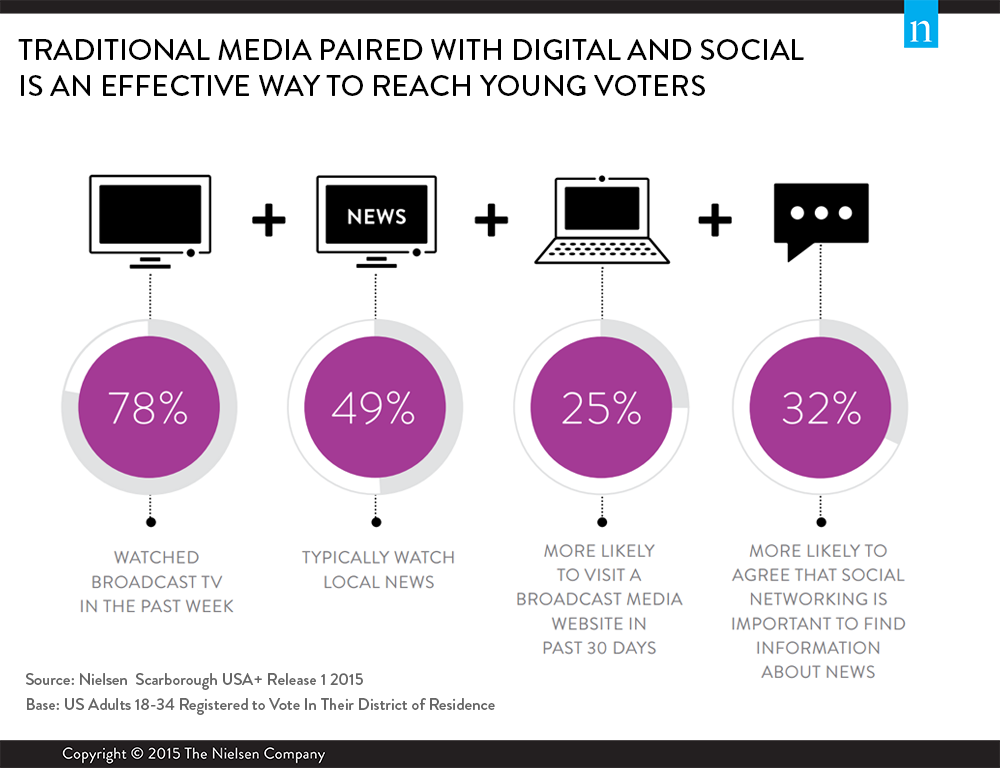With each passing day, the line between traditional linear TV and digital programming continues to blur. And it’s important to consider the degree to which the proliferation of new technologies influence different markets. Washington, D.C. and tech-savvy markets such as San Francisco and Seattle top the list for many technologies. However, in the past 18 months, cities like Detroit, Miami and Pittsburgh achieved high single- or double-digit gains in smartphone, subscription video on-demand (SVOD) and/or tablet penetration.
Despite the cross-country explosion of devices, live TV remains the primary medium to consume video. According to the latest third-quarter Total Audience Report, Americans spend four hours and seven minutes per day watching live TV and another 28 minutes watching time-shifted TV. And moving into this year’s presidential election, live TV remains Americans’ first choice when it comes to must-see events, such as political debates and political news coverage.
How do Millennial voters consume media?
In this edition of the Local Watch Report, we turn our focus to young voters. Millennial voters represent over a quarter of all U.S. registered voters, so understanding their media touchpoints, lifestyles and voting habits is key to optimizing advertising potential and capturing their attention.
Today’s Millennial voters are multicultural, single and work white collar jobs. And while young voters tend to be early adopters of new technologies and social media, they are not as elusive as we may think. On average, 78% of young voters view broadcast TV weekly, and nearly half of them watch local news.




